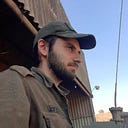How Wikipedia distorts the Israeli War of Independence
Wikipedia can be a useful source of information, but when it comes to a significant and important event like the 1948 war, Wikipedia clearly tends to adopt a very subjective and one-sided position.
The page “Killings and massacres during the 1948 Palestine war” illustrates this well.
This page claims to present atrocities committed by both sides in the war, but a quick enough reading to understand that this is a one-sided narrative.
Here are some examples from their list of what they define as “massacres”:
“Al-Khisas massacre”
Their description:
“10 Arabs dead including five children”
What really happened?
At the beginning of December 1947, a Jewish guard was shot near the village. Later that day, Arabs from the village area attacked Jews who passed near the village. Another incident took place on December 18, when a group of Arabs ambushed a Jewish driver near Kibbutz Ein Baruch, killing him. Traces of the killers led to the village of Al-Khisas.
According to an official announcement from the time:
“Regarding the retaliatory operation in the village of Al-Khisas, it was stated here from a certified source that the house was used as a nest for gangs and was first inspected before being blown up by the punitive company and all people were evacuated in time, but unfortunately a nearby cabin cracked and children perished and for that, those responsible expressed their sorrow, since there is no intention ,as known, to harm women and children.”
“Balad al-Shaykh massacre”
Their description:
“Between 17 and 70 Arab villagers” were killed
What really happened?
As David Collier has already revealed, this was not a massacre, but a shootout against the Arab workers who were involved in the massacre against Jews in Haifa. In the battle, 3 Jews and 9 Arabs were killed, almost all of them of fighting age
“Sa’sa’ Massacre”
Their description:
“60 Arabs killed inside their houses, including small children; 16 houses were demolished. Considered a model raid by Israeli forces”
What really happened?
On 20 January, the isolated kibbutz of Yechiam, in the western Galilee, was attacked by some 400 Arab fighters armed with mortars, medium and light machine guns and rifles. The kibbutz was completely surrounded and the attack opened simultaneously from all sides.
The attack was carried out by the 2nd Yarmuk Regiment of the ALA, which in early 1948 began penetrating Palestine in strength. Commanded by Adib al-Shishakly, a future ruler of Syria, the 2nd Regiment entered the country from Lebanon on the night of 10–11 January, setting its headquarters in the Galilean locality of Sasa.
The village of Sasa stood at the intersection of the Nahariya-Meron Road and the Northern Road, and controlled the area where the “Arab Liberation Army” soldiers made their way from Syria and Lebanon to Israel. The number of villagers was about 1,500. Among them was a unit of 100 fighters of the “Arab Liberation Army” and 300 local fighters, all armed with rifles and Sten guns.
“al-Husayniyya, Safad”
Their description:
“Over 30, including women and children. The massacre also caused many to flee the area. The total death toll was put at dozens by Israeli sources”
What really happened?
In a report from the period:
“ A top-ranking officer of the Arab “military staff”, according to documents and credentials found in his pockets, was among the 20 Arabs killed in a punitive raid this morning by a Haganah squad on al-Husayniyya, about five kilometres southwest of Lake Huleh. At least 20 other Arabs were wounded and several houses were blown up when the raiders advanced into the village, which had served both as a base for attacks on Jewish transport on the nearby highway and as an organizational centre for gangs. Mines have been laid on the road at this point.
The raiding party was met by strong resistance, but penetrated the village and succeeded in placing their explosive charges in a number of houses while engaging in a hand-to-hand battle with the Arabs. Three members of the Haganah were killed”
This is just what I found from the first examples of “massacres”, without even going into cases like Deir Yassin and Lydda, in which recent studies have concluded that those were battles, not massacres or Al-Dawayima, which even according to Arab officials who investigated these stories at the time, concluding that 27 had been killed and that “the information on the slaughter in Duwayma was exaggerated.”(contrary to the “80–200 killed”), apparently carried out in revenge for atrocities against Jews, ”
But there is something even more strange about this list, this list does not include these evens:
-November 30, 1947
The Murder of 7 Jews in an Egged buses
-December 3, 1947
8 Jews were reportedly killed in a Arab riot in at Mamilla and Jaffa Road in Jerusalem.
-December 12 , 1947
The Arab Legion killed 14 Jews ( boys in their teens ) near Ben Shemen
-December 14, 1947
3 Jews were burned alive by an Arab mob in Lydda
-December 26
23 Jews were killed in riots in Jerusalem, Haifa and the Negev
-January 16 1948
35 members of the Haganah killed attempting to carry supplies across country to Kfar Etzion.
-February 29th
Arabs murdered 10 Jewish workers at the Holon interchange
-March 18th
Arabs murdered 4 Jewish workers near Acre
-March 27
47 members of a Haganah convoy killed near the village of al-Kabri.
These are just some of the events that for some reason did not get on the list of “Killings and massacres during the 1948 Palestine war”
This is clear, the goal is to create a false narrative that in 1948 Zionist forces brutally massacred innocent and defenceless Palestinian people.
